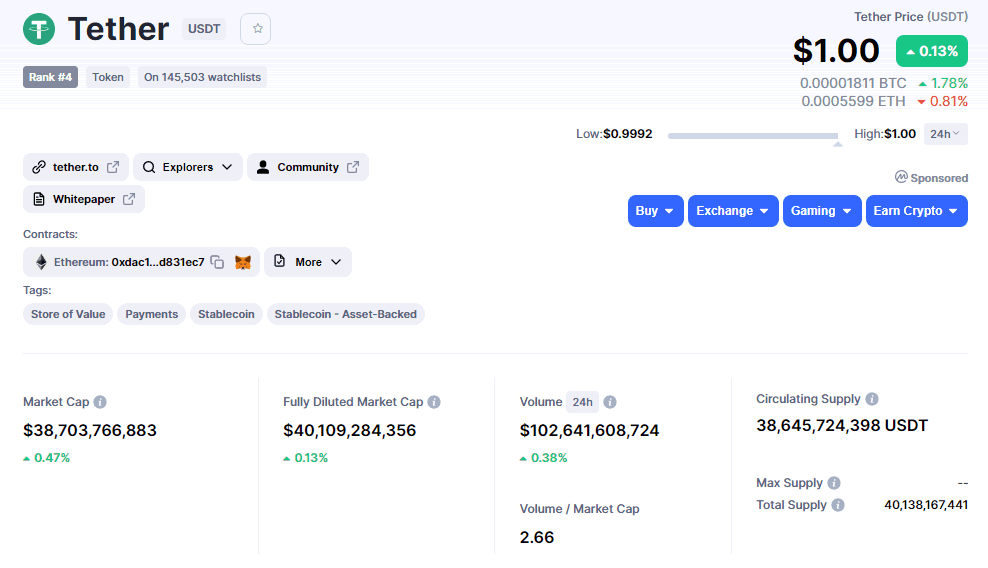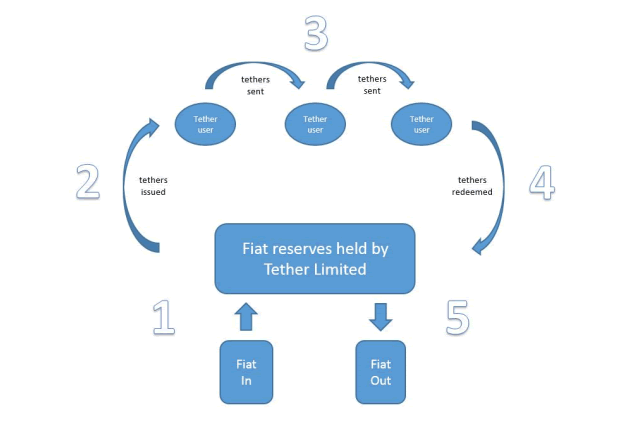Crypto Academy Week 6 - Homework Post for [yohan2on]-Introduction to Stablecoins - Part 1
Introduction
In a market full of risks and price volatility stable coins are really important and essential to the survival of the market in the long term. Stable coins are are cryptocurrencies designed to minimize the volatile price movement within the cryptocurrency environment by pegging each token to an underlying asset like fiat currencies and digital assets like bitcoin, ether, and other precious metals like gold and silver.
Stable coins aim to harness the best from both worlds(Physical and Virtual) to create a hybrid project, like the instant processing and security or privacy of payments of cryptocurrencies, and the volatility-free stable valuations of fiat currencies.
Stable coins try to tackle the volatility of cryptocurrencies by backing or tying them to the value of other stable currencies usually fiat like the US dollar, however, table coin can also be pegged to a non-fiat asset like precious metals and even cryptocurrencies. These underlying asset can also be known as collaterals, So have two major types of Stablecoins which include :
- Fiat-Collateralized Stablecoins
Fiat-collateralized Stablecoins are Stablecoins that are pegged to the value of a fiat currency like USD. In this case, the underlying asset of this type of Stablecoins are fiat currencies, and one of the most extensively underlying fiat collateral is the US dollar but companies are exploring stablecoins pegged to other fiat currencies as well, such as bilira, which is pegged to the Turkish lira.
- Crypto-Collateralized Stablecoins
Crypto-Collateralized Stablecoins are Stablecoins that are pegged or backed by the value of a virtual currency like bitcoin and ether. Since the reserve cryptocurrency may also be prone to high volatility, such stablecoins are “over-collateralized”—that is, a larger number of cryptocurrency tokens is maintained as a reserve for issuing a lower number of stablecoins.
There are also Non-Collateralized Stablecoins, Non-collateralized stablecoins don’t use any reserve or peg their value to a fiat currency rather a consensus mechanism that regulates the supply and demand of such stablecoins to maintain stability just like central banks. An ideal example of such a stable coin includes Basecoin.
However, on this assignment, we won't be talking about Non-Collateralized Stablecoins or Crypto-Collateralized Stablecoins. In this piece, we going to make an in-depth dive into Fiat-Collateralized Stablecoins and some of its prime examples. We will be considering one of the most popular stablecoins and its infrastructure.
First on the list is Tether(USDT)
Tether(USDT)
Tether, or USDT, is by far one of the oldest stablecoins, launched in 2014, and is the most popular to this day. It’s currently one of the most valuable cryptocurrencies overall by market capitalization sitting comfortably at 4th place with more than 38 billion dollars in market cap just below Binance coin.

Tether as the name implies that this special type of stablecoins is tethered or pegged to an underlying asset which in this case is the US dollars. Tether is a Fiat-Collateralized Stablecoin that aims to keep cryptocurrency valuations stable, as opposed to the wide swings observed in the prices of other popular cryptocurrencies like Bitcoin and Ethereum. Tether with its stable price would serve as a perfect store of value and as a medium of exchange between parties.
Tether was specifically designed to build the necessary bridge between fiat currencies and cryptocurrencies and offer stability, transparency, and minimal transaction charges to users. It is tethered to the U.S. dollar and maintains a 1:1 ratio with the U.S. dollar in terms of value and circulation. This means that 1 Tether is equal in value to 1 U.S dollar.
At any given time the balance of fiat currency held in our reserves will be equal to (or greater than) the number of tethers in circulation.
Tether claims that all of its circulating token in the market is backed up by it reserve in real-time which includes traditional currency and cash equivalents and, from time to time, may include other assets and receivables from loans made by Tether to third parties.
The value of our reserves is published daily. The value of our reserves matches or exceeds the value of all tethers in circulation.
This simple configuration most easily supports a reliable Proof of Reserves process, a process which is fundamental to maintaining the price parity between tethers in circulation and the underlying fiat currency held in reserves.
Flow of Funds Process and life cycle of Tether
Users can buy, store and spend Tether via exchanges like Bitfinex, Binance, and other top exchanges out there, however, have you ever wondered what the life cycle of a single Tether coin looks like, how is its supply and creation of a new coin kept in check.
The image below will highlight the lifecycle of a single Tether token, we are going to use what exchanges do as a use case, you can substitute Binance or any of your favorite exchange on the step below:

Step 1 - Exchange deposits fiat currency into Tether Limited's bank account.
Step 2 -Tether Limited mints and credits the exchange tether account. The exchange receives the amount of USD fiat deposited in proportion to Tether, i.e 1k USD=1k Tether.
Step 3 -Exchanges transact with tethers or supplies tether to its customers.
Step 4 -The Exchange deposits tethers with Tether Limited for redemption into fiat currency.
Step 5 -Tether Limited destroys the tethers and sends fiat currency to the Exchanges bank account.
Benefit of Tether as a stablecoin
Tether serves as a hedge against market volatility.
Customers can receive interest when they take their tether on a lending platform like justlend and other lending platforms.
Transactions are fast and related to physical currencies
Provides an entry medium for customers who wish to buy cryptocurrencies.
It serves as an ideal unit of account.
Below are what some top project have to say about Tether.
“Tether is the latest and perhaps most high-profile project to attempt to use the blockchain’s functionality as a ledger to move digital tokens that represent a real currency.”- Coindesk
“Tether seeks to bring the stability and everyday utility of fiat currencies and revitalize them with a cryptocurrency infusion.”-Cointelegraph
“Tether opens up decentralized, peer-to-peer networks to a variety of commercial uses.”-WSJ

Thanks for reading up to this point guys and I hope you enjoyed my #cryptoprofessor homework.
This post is made in response to the #cryptoacademy program and the #cryptoprofessor homework by @yohan2on.


Subscribe:::Discord.
:::Whatsapp :::join trail

Hi @whitestallion
Thanks for attending the 6th - Crypto course and for your effort in doing the given Crypto course.
Feedback
That's true, very well highlighted. It's such a unique and profound aspect of Tether. Acting as a safe haven for Crypto investors. No wonder Tether has a huge trading volume and a way bigger market capitalization that makes it a 5th ranked Crypto coin on the Coinmarketcap.
Homework task
8.5
Thanks for reviewing my post, I will continue to contribute original content to the #steemitcryptoacademy.
Good and informative article. Thanks for sharing.